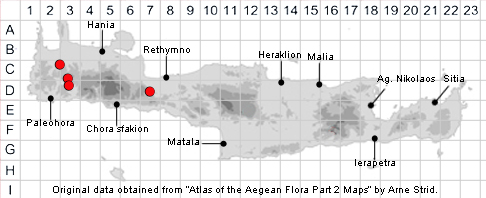
SPECIES DESCRIPTION
RUMEX OBTUSIFOLIUS
Family and Genus:- See- POLYGONACEAE/Subgen. RUMEX
Common Names:- None
Homotypic Synonyms:- None
Meaning:- Rumex (L) A name used by the Roman naturalist and philosopher Pliny
for sorrel.
Obtusifolius (L) With obtuse leaves
General description:- Perennial, with a short, branched rhizome, forming several-
stemmed clumps.
Stem:-
1) Usually 50-150 cm, stout, sulcate, branched.
Leaves:-
1) Lower, rather long-petiolate; blade, 9-20 x 4-12 cm, ovate-oblong, usually cordate
at the base, obtuse, flat or with slightly undulate margins.
Flowers:-
1) Inflorescence, much-arcuately branched, leafy below; each branch with several
many-flowered whorls, remote below, crowded above.
2) Pedicels, slender, up to 2½ times as long as the valves.
Fruit:-
1) Fruiting valves 4-6 x 2.5-4 mm, ovate to triangular-lingulate, truncate at the base,
subobtuse, variously dentate or spinulose; at least one valve tuberculate.
Key features:-
1) Teeth of valves, seldom more than 2 mm.
2) Basal leaves at least twice as long as wide, ± cordate, obtuse or subacute.
3) Valves. not cordate, with 1 large tubercle and sometimes 2 smaller.
4) Petiole, slightly longer than the lamina.
Habitat:- Ruderal habitats near villages, damp meadows, woodland clearings. (0-)
400-1600 m.
Distribution:- Fairly common in N & C mainland Greece, scattered southwards to
C Peloponnisos. - A variable species occurring in most of Europe and through
Anatolia to NW Iran. Rare on Crete currently known from a few scattered locations
in the west.
Flowering time:- (May-)June-Aug.
Photos by:- Kind permission of Saxifraga - Free Nature Images
